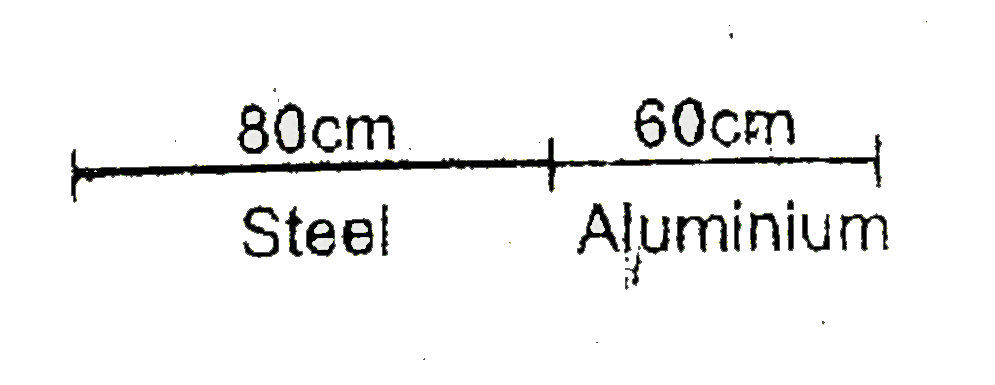A metal wire of length 80 cm, area of cross-section 3 mm2 and material density 3000 kg m−3 is joined to another metal wire of length 60 cm, area of cross-sectional 1 mm2 and material density 9000 kg−m3.
The free ends of the two wires are stretched between two rigid supports and a tension of 40 N is produced in the wires. The minimum frequency of the tuning fork which can produce stationary waves with the joint of the wires as a node isSolution in Telugu
2003Hz
4003Hz
5003Hz
70C3Hz
The correct Answer is:C
Given, l1=80cm=80×10−2m
Al=3mm2=3×10−6m2
ρ1=3000kg.m−3
l2=60cm=60×10−2m
A2=1mm2=10−6m2
ρ2=9000kg.m−3⇒T=40N
According to the question,
for stationary wave to be formed, frequency of P th harmonic due ot Ist metal wise = frequency of Q th harmonic due to 2nd metal wire
P×12l1√Tρ1A1=Q×12l2√Tρ2A2
or PQ=l1l2√ρ1A1ρ2A2=80×10−260×10−2√3000×3×10−69000×10−6
or PQ=43
Hence, p is 4th harmonic and Q is 3rd harmonic. So, the minimum frequency of the tuning fork, E0 produce stationary waves with given wire of 2 metals, frequency of tuning fork = frequency of Pth harmonic/Q th harmonic of 2 respective wire.
n=P×12l1√Tρ1A1
=4×12×80×10−2√403000×3×10−6=5003Hz
Similar Questions
Work done in stretching a wire of length 1 m and of cross-sectional area 1mm2 through 2 mm if Young's modulus of the material of the wire is 2×1011N/m2 is .......
View SolutionCalculate the speed of a transverse wave in a wire of 1.0mm2 cross-section under a tension of 0.98 N. Density of the material of wire is 9.8×103kg/m3.
View SolutionWhen a wire 2 m long and 0.05 cm^(2) in cross-section is stretched by a mass of 2 kg, it increases in length by 0.04 mm. Young's modulus of the material of the wire is (g=10ms^(-2))
View SolutionCalculate the speed of a transverse wave in a wire of 1.0mm2 cross-section under a tension of 0.98N. Density of the material of wire is 9.8×103kg/m3
View SolutionAn aluminium wire of length 60 cm is joined to a steel wire of length 80 cm and stretched between two fixed supports. The tension produced is 40N. Cross sectional area is 1 mm^2 (steel) and 3 mm^2 (aluminium). Minimum frequency of the tuning fork which can produce standing waves with the joint as a node is (density of Al= 2.6 g cc^(-1) ) and density of steel =7.8 g cc^(-1))
View SolutionFigure shows an aluminium wire of length 60cm joined to a steel wire of length 80cm and stretched between two fixed supports. The tension produced is 40N. The cross-sectional area of the steel wire is 1.0mm2 and that of the aluminimum wire is 3.0mm2 The minimum frequency of a tuning fork which can produce standing waves in the system with the joint as a node is 10P (in Hz) the find P. Given density of aluminimum is 2.6g/cm3 and that of steel is 7.8g/cm3.

View SolutionA steel wire of length 60 cm and area of cross section 10^(-6)m^(2) is joined with a n aluminium wire of length 45 cm and are of cross section 3xx10^(-6)m^(2) . The composite string is stretched by a tension of 80 N. Density of steel is 7800kgm^(-3) and that of aluminium is 2600kgm^(-3) the minimum frequency of tuning fork. Which can produce standing wave in it with node at joint is
View Solution
